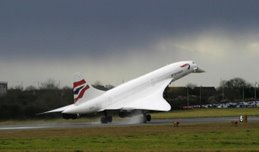It seems that Rabat's history began in the third century BC with a settlement on the banks of the River Bou Regreg, known as Chellah. In 40 AD, Romans took over Chellah and converted it to the Roman settlement of Sala Colonia. Rome held the colony until 250 AD when they abandoned it to Berber rulers!
***
CHELLAH


"CHELLAH GATE (Outside and inside) - The entrance to the complex, the most ancient human settlement on the mouth of the Bou Regreg River, probably inhabited by Phoenicians and Carthaginians. This main gate was built in 1339"



"SALA COLONIA was referred to as Sala by Ptolemy. Though many of the structures in Chellah were damaged by the 1755 Lisbon earthquaque, there are still many ruined Roman architectural elements, including a forum and a triumphal arch"

"TRIBUNUS PLEBIS"

"ROMAN BATHS"

"NECROPOLIS - The site of Chellah was abandoned in 1154 AD in favour of nearby Salé. The Almohad dynasty used the ghost town as a necropolis, and some new additions, including a mosque, were made. Nowadays the site has been converted to a garden and tourist venue"
***
SALÉ


"SALÉ, the twin city to Rabat, across the Bou Regreg to the north, is a highly polluted, badly planned, rapidly expanding «dormitory town». It was apparently colonised by the Phoenicians at approximately the same time of Chellah. Once a self-ruled Republic, Salé played an important part in Moroccan history"
***
MEDINA RABAT

"ROOFS OF RABAT - After Chellah and Salé, the oldest part of the settlements of the Bou Regreg River was the medina of Rabat"
MODERN RABAT

"MOHAMMED V AVENUE - Rabat is also a modern city"

"POST OFFICE"

"BANK AL-MAGHRIB - The central bank of Morocco is located in a wonderful building"

"ROYAL PALACE - Right in the heart of Rabat, its building was started in 1864 and it's surrounded by a wall cut by three gates. There is a huge empty space in front of the main door, the Mechouar"

"AHL-FAS MOSQUE - Right across from the Royal Palace, stands a fine example of Islamic architecture: the King's own mosque"

"PORTUGUESE CANNON - It seems that this cannon was left by the Portuguese at the Battle of the Three Kings (Battle of Alcácer Quibir), fought near the town of Ksar-el-Kebir between Tangier and Fez, in northern Morocco, on August 4th, 1578"

"RESIDENCE - A nice place to live..."


"PUBLIC BUILDING - Beautiful hall and wonderful ceiling"
















































